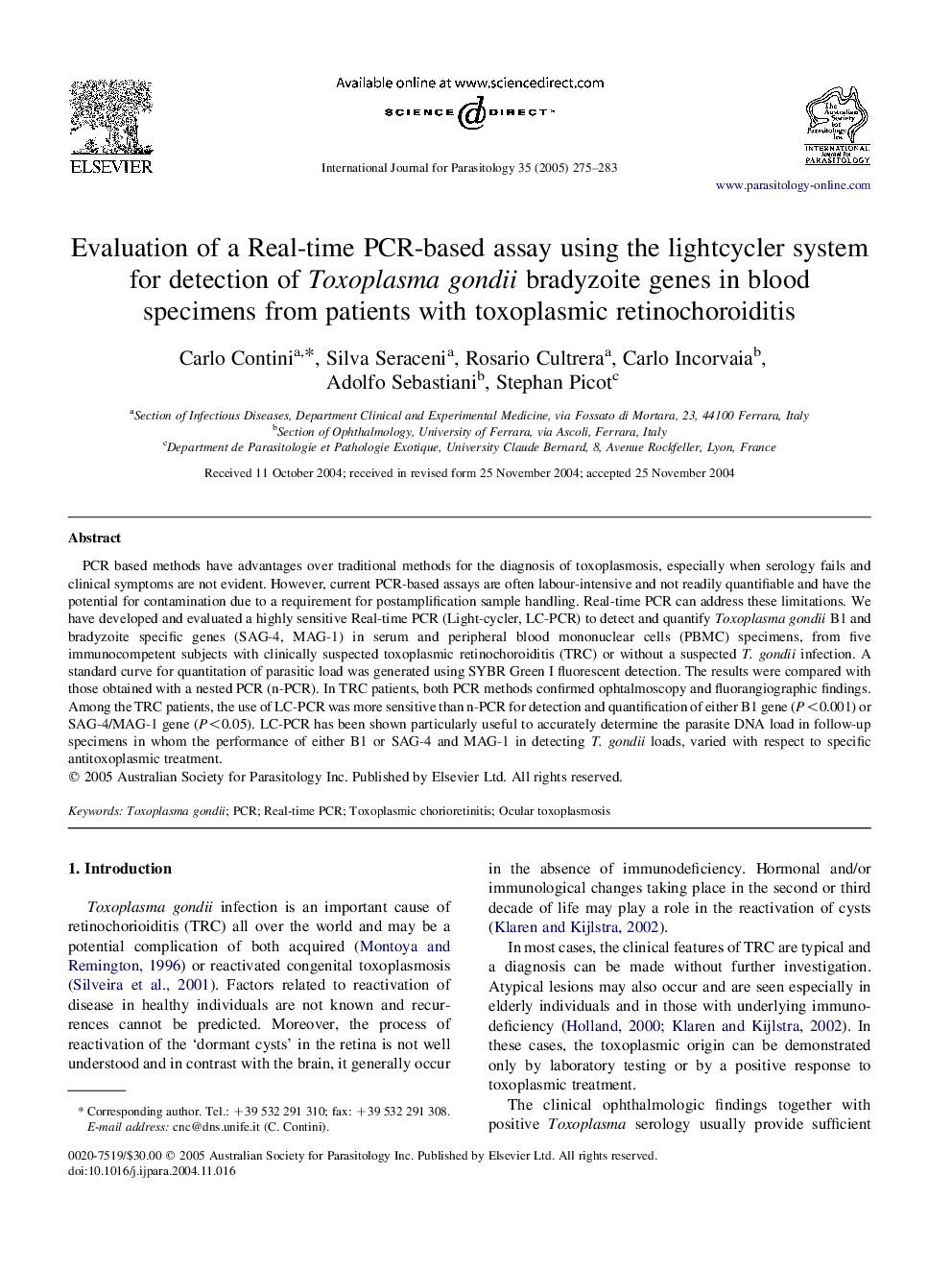| Article ID | Journal | Published Year | Pages | File Type |
|---|---|---|---|---|
| 8979954 | International Journal for Parasitology | 2005 | 9 Pages |
Abstract
PCR based methods have advantages over traditional methods for the diagnosis of toxoplasmosis, especially when serology fails and clinical symptoms are not evident. However, current PCR-based assays are often labour-intensive and not readily quantifiable and have the potential for contamination due to a requirement for postamplification sample handling. Real-time PCR can address these limitations. We have developed and evaluated a highly sensitive Real-time PCR (Light-cycler, LC-PCR) to detect and quantify Toxoplasma gondii B1 and bradyzoite specific genes (SAG-4, MAG-1) in serum and peripheral blood mononuclear cells (PBMC) specimens, from five immunocompetent subjects with clinically suspected toxoplasmic retinochoroiditis (TRC) or without a suspected T. gondii infection. A standard curve for quantitation of parasitic load was generated using SYBR Green I fluorescent detection. The results were compared with those obtained with a nested PCR (n-PCR). In TRC patients, both PCR methods confirmed ophtalmoscopy and fluorangiographic findings. Among the TRC patients, the use of LC-PCR was more sensitive than n-PCR for detection and quantification of either B1 gene (P<0.001) or SAG-4/MAG-1 gene (P<0.05). LC-PCR has been shown particularly useful to accurately determine the parasite DNA load in follow-up specimens in whom the performance of either B1 or SAG-4 and MAG-1 in detecting T. gondii loads, varied with respect to specific antitoxoplasmic treatment.
Related Topics
Life Sciences
Immunology and Microbiology
Parasitology
Authors
Carlo Contini, Silva Seraceni, Rosario Cultrera, Carlo Incorvaia, Adolfo Sebastiani, Stephan Picot,
